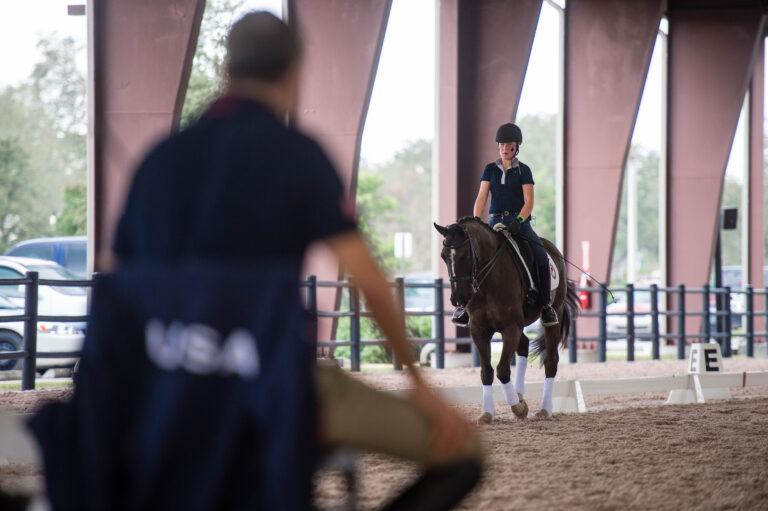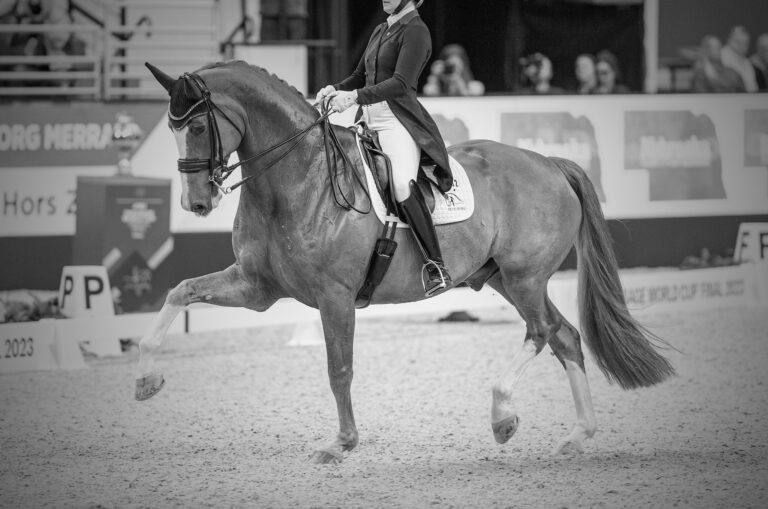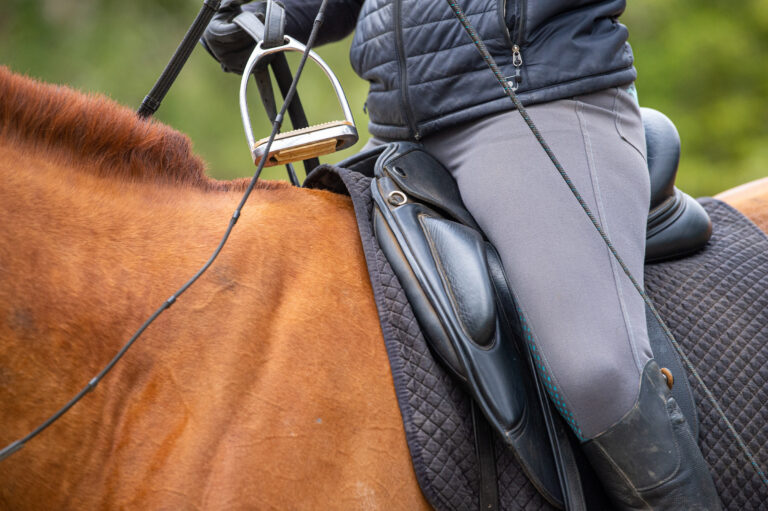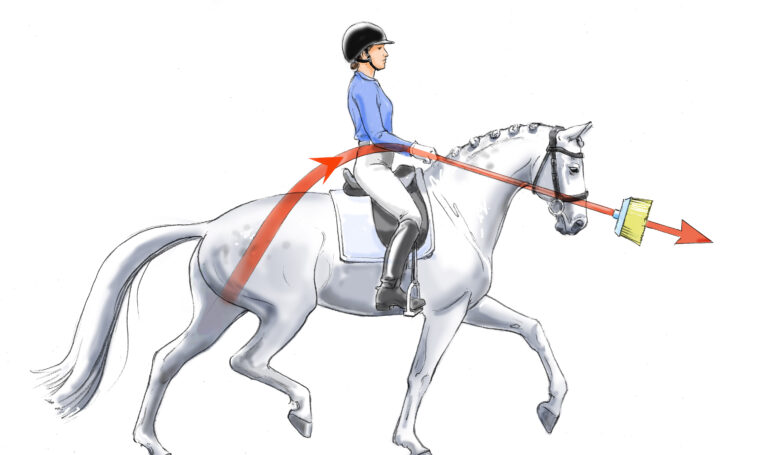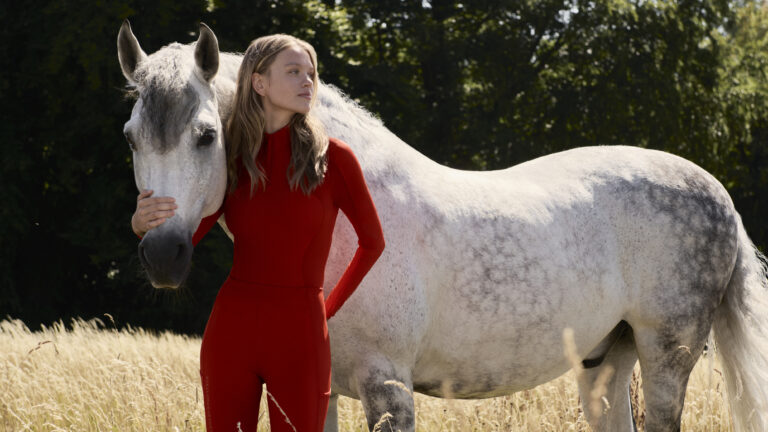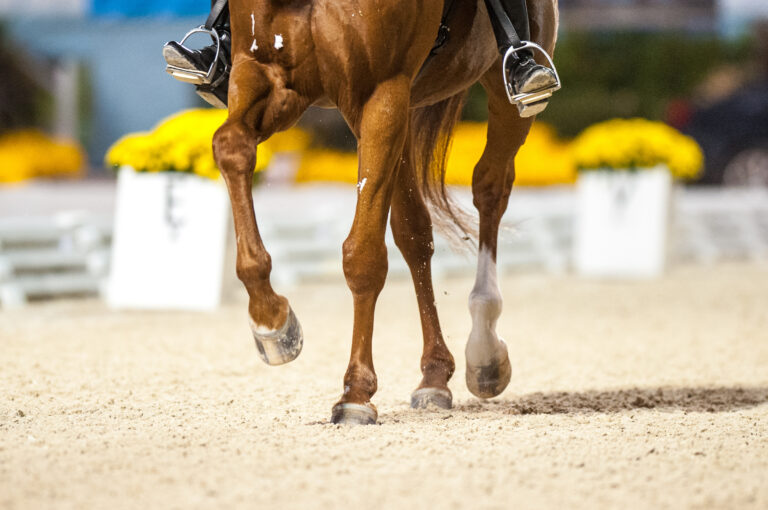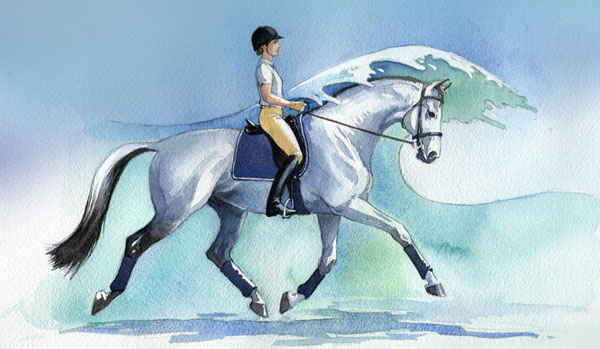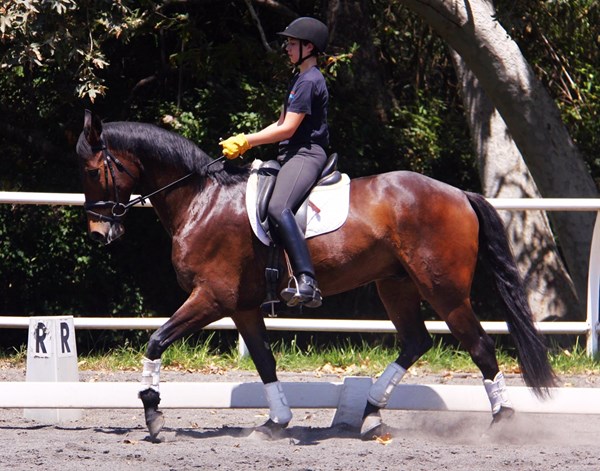
This picture shows Griffin Denham riding the 7-year-old Swedish Warmblood Ruffino, who is bred and owned by Lars Holmberg and Ulf Wadeborn. He has shown First Level and from the looks of this picture, he is well on his way to higher levels.
Ruffino is a very harmonious horse who shows good balance, nice activity and gives the impression that he is a very elastic horse. He works into a nice contact on the bit and is foaming with a closed mouth. These are all requirements that a horse must meet to develop further in dressage.
I like the concentration between Griffin and Ruffino, as they both seem fully focused on the task and appear to trust each other. It looks like they have a good partnership between them.
Griffin appears to be a talented young rider with a considerable amount of feel. Looking at him I immediately notice his very long legs. Some people think that long legs are a must for dressage riders, but this is not always true. As much as long legs can be helpful, they can be harder to control and can get in the way, too. Even though Griffin’s legs are currently in a bent position, his leg is longer than the length from his hip to the top of his helmet. Looking closer at his legs, I see that his lower leg appears even longer than his thigh. He also has very long arms. Having long limbs can look very elegant, but in order to achieve this elegant picture, a lot of core stability, strength and control are required.
In this picture Griffin’s inside leg is positioned a little too far back. In this case, it is positioned more like an outside leg and shows a bit of outside rotation. This is a very common mistake that happens with a long lower leg, as the tiniest bit of tension in the muscles in the back of the leg and knee will bend the knee a bit more and as the angle with the length of the leg is increasing, his ankle is easily too far back.
Whenever strength in the leg is needed, a long leg is more prone to coming out of the perfect position. On the other hand, a long leg can be advantageous because it can act as a strong lever and a very powerful tool. It is important for Griffin to learn not to overuse his legs. He should seek to find a balance between the strength in his core and his legs in the aids.
For Griffin, remembering to stretch his upper body to counterbalance his long legs is very important. He has a nice natural upper-body position. His shoulders are just slightly rounded because he wants to give with the reins while still maintaining the contact with his hands. However, he needs to keep his shoulders wide with his shoulder blades back and down while he still allows his arms to move forward. From that position, he can maintain more core stability in the moment of giving.
This position allows for more stability and elasticity at the same time. To better understand this concept, Griffin should try this: Pretend there is a magnet on top of your helmet that is attracted to another imaginary, strong magnet up in the sky. This image should help you stretch up in your body. Remember, you should also feel a stretching sensation in your body during the landing phase of the horse’s stride. If you struggle with losing contact in your seat during each canter stride, mastering this will be helpful. Stretching up with your upper body while reaching down with your legs can create a more stable core. This stability should also help you to find the ability to sit deep in the saddle with lightness. For Griffin, it is important to find this feeling between his thigh and his abdominal muscles. Lifting up while stretching down will secure his seat inside the movement and allow him to relax his lower-leg position more.
This picture looks like horse and rider are well on their way to exploring higher levels and the wonders of dressage. I wish this talented pair a lot of joy and success in their journey.


